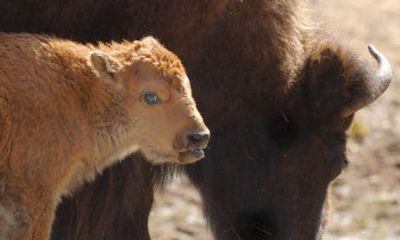Renewal of bison hunting likely

BILLINGS – State wildlife officials plan to recommend renewing a hunting season on bison that leave Yellowstone National Park in search of winter forage, and they will probably request that it be expanded, a spokeswoman for the Montana Department of Fish, Wildlife and Parks said Monday.
The agency has been gathering comments, including opinions of hunters who participated in last winter’s hunt, as it prepares to write a staff recommendation for the state Fish, Wildlife and Parks Commission, Mel Frost said.
Issues that still need to be addressed include the number of hunting permits and the length of the season, she said.
The state’s first bison hunt in 15 years began last November. The three-month season was divided into two sessions, with hunters allowed to kill as many as 25 bison during each period. Forty bison were killed, and all 34 of the permits issued to the general public were used, Frost said. Other permits were awarded to the state’s Native American tribes.
Hunting was allowed near the park’s northern and western boundaries, from which bison often wander, particularly in winter, in search of forage in Montana.
Previous hunts sparked protests and outrage in part because of how they were conducted, with wardens leading hunters to bison that often were shot at close range while grazing. That was not allowed this time around, in what state wildlife officials considered a fair-chase hunt.
Protests this time around were largely nonconfrontational. Members of the Buffalo Field Campaign, an activist group dedicated to protecting the bison, were on hand but mainly documented with cameras what occurred.
Comments from hunters who responded to a survey by the agency ranged from there being too many protesters who kept “getting in the way,” to a pat on the back, of sorts, to activists for not interfering in a hunt.
Twenty-four of the 30 hunters who participated in the survey rated as excellent their overall bison hunting experience; a number of hunters, in a written summary of their comments provided by Frost, also urged the agency to continue or expand the hunt.
Craig Sharpe, executive director of the Montana Wildlife Federation, said the hunt probably couldn’t have gone better. It was run as a fair-chase hunt, he said, with little agency involvement.
Stephany Seay, a spokeswoman for the Buffalo Field Campaign, said her group is not anti-hunting but does oppose hunting bison that leave Yellowstone until, among other things, the animals are given secure habitat in Montana.
If the hunt continues, Seay said her group wants it to be as “fair and ethical as possible.” Members of the group have recommended better educating hunters about shot placement to help ensure that bison don’t suffer needlessly, she said.
Hunters this year were required to take a training course covering a range of topics, from dealing with protesters and news reporters to making a clean kill and the history of bison in the region. All but one of the hunters said the course was helpful.